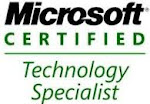SharePoint 2013 manager got released. You can check and download SP2013 manager in codeplex.(http://spm.codeplex.com/releases/view/97332). SharePoint manager is one of the necessary tool for share point developers/administrators. SharePoint manager is also upgrading from share point 2007 to share point 2013. currently SPM 2013 is stable.
here is the screen shot for SharePoint 2013 manager,
While running the share point manager i got an error, the requested service http://localhost:32843/SecurityTokenServiceApplication/SecurityToken.svc not been activated.
we'll get this error, if Secure Token Service Application pool not started in share point server, or permissions for .net service application pool not set to full trust. For more details check this url http://support.microsoft.com/kb/2520344.
Go to central administration, check secure store service is activated or not. And do iisreset.
here is the screen shot for SharePoint 2013 manager,
While running the share point manager i got an error, the requested service http://localhost:32843/SecurityTokenServiceApplication/SecurityToken.svc not been activated.
we'll get this error, if Secure Token Service Application pool not started in share point server, or permissions for .net service application pool not set to full trust. For more details check this url http://support.microsoft.com/kb/2520344.
Go to central administration, check secure store service is activated or not. And do iisreset.

























